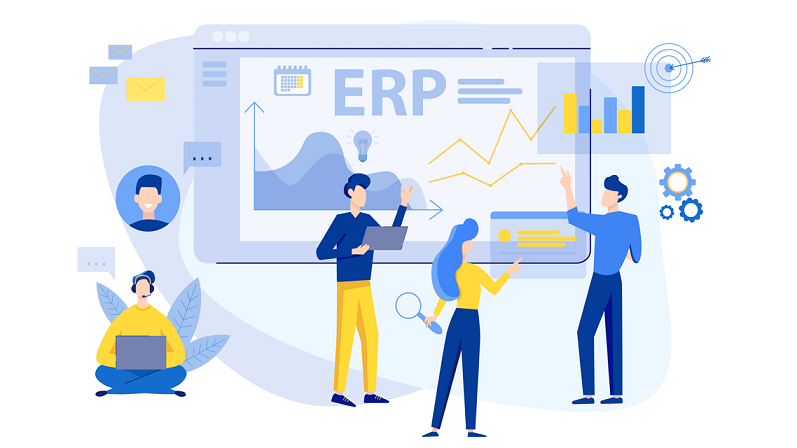Enterprises Resources Planning Trends
Since 2011, some interesting trends have emerged evolution of the ERP system from its foundations to the general saturation of the large organization marketplace.
Human Resourcing
Further reduce costs, particularly human resources by simplifying the ‘on-boarding’ recruitment process and providing APIs for external payroll processing service organizations.
Financial Health
Closer real-time monitoring of overall financial health and financing risks and opportunities. There has also been spectacular growth in unconventional sources of finance such as crowd-funding, which has been largely driven by new technical possibilities and historically low savings returns.
Implementations
Attempts to reduce the cost of implementation to allow smaller organizations to consider ERP system solutions. Particularly to allow them to seamlessly integrate and trade with larger organizations, particularly if they are subsidiaries or critical supply-chain partners.
ERP On-demand / Cloud
ERP-on-demand solutions based on current needs, allowing organizations to rent the use f specific modules. This trend is largely based upon cloud-computing business models, from application ‘software-as-a-service’ (SaaS), hardware ‘platform-as-a-service’ (PaaS), networking ‘infrastructure-as-a-service’ (IaaS) and bulk data storage and integration ‘data-as-a-service’ (DaaS) technologies. These robust, highly scalable services are collectively beginning to revolutionize ERP deployments by reducing cost and risk, and have been quickly embraced by the big ERP suppliers such as SAP’s ‘Business by Design’ or Oracle’s ‘Fusion Cloud’ products. Furthermore, Gartner have predicted that organizations face a rapid growth in their data storage requirements of 650% over the next five years (Infosys, 2014) which would overstrain many in-house IT architectures.
Consultancy
An increased emphasis on the use of high quality experienced consultants as part of the overall success criteria. Many countries have also revised their work visa systems in order to protect indigenous resources, which has caused a short-term scarcity of consultants and an increase in demand and pay rates.
Social Integration
Experimentation with the use of social media and collaborative activity tools to identify information requirements and other relevant trends. For example, in 2012 Microsoft purchased ‘Yammer’, a highly successful supplier of enterprise social networking software, to integrate with its Dynamics and SharePoint products.
Third-party Support
The use of third parties to provide day-to-day support and maintenance for existing ERP system operation. This includes problem-solving and routine tasks such as master-data maintenance.
Ubiquity
With the maturation of the ERP marketplace, so it follows that employees of large organizations are able to readily transfer valuable skills from one employer to another. This has many advantages to both parties, including reduced sap training requirements and higher productivity.
Agility
ERP systems are necessarily large and complicated; their strength lies in the competent automation of core functions and services. It typically takes between five and seven years for a new ERP system to overcome inertial resistance and deliver on its promises (Infosys, 2014) and that is a long time in the modern marketplace.
Many organizations now face increasing pressure to demonstrate a responsive and agile approach to their customers, and in some cases their suppliers. This conflict has been particularly challenging for consultants, and their role has shifted from one-off configuration requirements to continual configuration adjustment and cross-platform integration challenges using increasingly inventive techniques.
Analytics
Process automation and standardization are the staple features of ERP systems. In most cases this includes an endless variety of customizable reporting tools to help managers monitor and plan. The most successful organizations have moved well beyond this by implementing increasingly sophisticated data analytics software and prioritizing responsive actions. As noted earlier, the volume of data available for sifting, sorting and mining is already enormous and forecast to balloon. For some organizations this will be a problem, but many will view this an a opportunity for greater insights.
